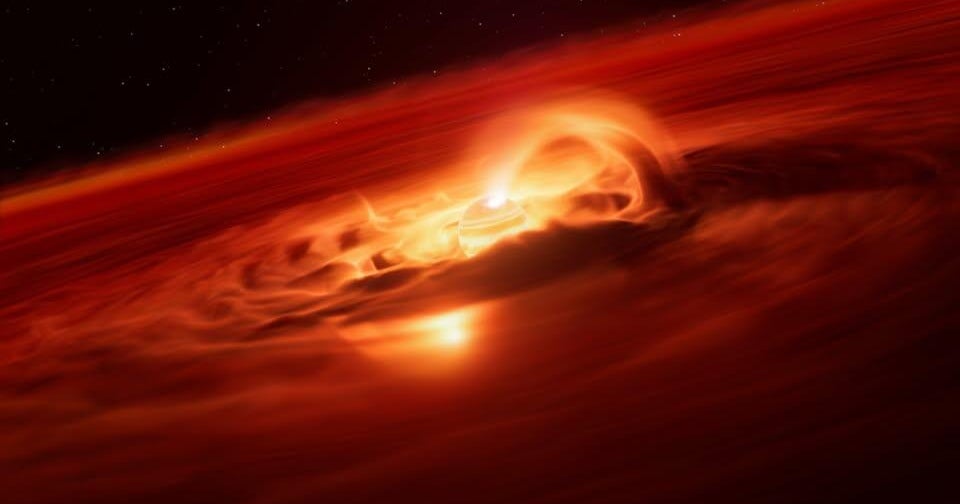Scientists have identified a lone planet with a ferocious appetite. Located in the Chamaeleon constellation roughly 620 light-years away, the rogue planet, named Cha 1107-7626, exists in the vast emptiness of space, far from the warmth of any star.
Rogue planets like this one are cosmic drifters — worlds that roam the galaxy untethered, unlike the familiar planets bound to a solar system. Most rogue planets are thought to be cold, silent wanderers. But Cha 1107-7626 is different.
“People may think of planets as quiet and stable worlds, but with this discovery we see that planetary-mass objects freely floating in space can be exciting places,” Víctor Almendros-Abad, an astronomer at the Astronomical Observatory of Palermo, National Institute for Astrophysics (INAF), Italy and lead author of the new study in a statement.
For instance, Cha 1107-7626 is not just drifting through interstellar space — it’s feeding.
Using the European Southern Observatory‘s (ESO) Very Large Telescope (VLT), astronomers have caught it pulling in gas and dust at an astonishing rate: six billion tons every single second. Never before has a rogue planet, or any planet, been observed growing this fast.
“This is the strongest accretion episode ever recorded for a planetary-mass object,” Almendros-Abad said.
With a mass equivalent to between five and 10 Jupiters, Cha 1107-7626 is one of the lowest-mass free-floating planets known to host a disk and show active accretion. Observations from ESO’s VLT and NASA’s James Webb Space Telescope (JWST) reveal telltale signs of a rich, evolving system: infrared excess from 4 to 12 microns, silicate features at 10 microns (similar to those in stars and brown dwarfs), hydrocarbon emission lines pointing to a carbon-rich disk, and multiple signatures of ongoing accretion. Together, these make Cha 1107-7626 the clearest case yet of disk-driven growth in a planetary-mass object — a true poster child for how rogue planets can build themselves in the dark.
“The origin of rogue planets remains an open question: are they the lowest-mass objects formed like stars, or giant planets ejected from their birth systems?” wondered the study’s co-author Aleks Scholz, an astronomer at the University of St. Andrews in the United Kingdom, in the statement.
Moreover, Cha 1107-7626 isn’t growing at a steady pace — it surges. The team used VLT equipped with the X-shooter spectrograph, along with JWST data and archival observations from the VLT’s SINFONI instrument, to catch the planet during a “growth spurt,” or burst of accretion. By comparing the light it emitted before and during the burst, the team was able to piece together clues about the process.
Cha 1107-7626’s violent growth spurt appears to have been fueled by its magnetic field, which is a process previously only observed in stars. Even more surprising, the chemistry of its disk shifted during the burst, with water vapor appearing only while the accretion was underway.
The discovery suggests at least some rogue planets may grow much like stars, since similar bursts of accretion have been seen in stellar nurseries. Detecting these free-floating worlds is notoriously difficult — they’re faint and elusive — but that could soon change. With the upcoming Extremely Large Telescope (ELT), equipped with the world’s largest mirror and operating under the darkest skies, astronomers will be able to track down more of these lone planets and reveal just how star-like they truly are.
“This discovery blurs the line between stars and planets and gives us a sneak peek into the earliest formation periods of rogue planets,” Belinda Damian, an astronomer at the University of St. Andrews, said in the statement.
“The idea that a planetary object can behave like a star is awe-inspiring and invites us to wonder what worlds beyond our own could be like during their nascent stages,” ESO astronomer Amelia Bayo said in the statement.
Source link
